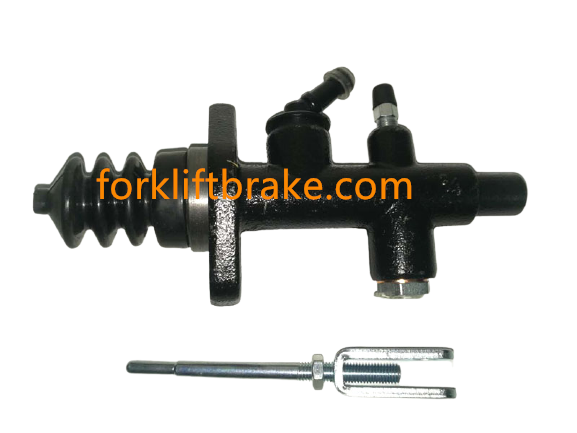Introduction:
Proper braking is crucial for any moving vehicle, be it a car or a forklift. When a forklift operator presses the hydraulic brake pedal, they exert pressure on the fluid, creating friction on the forklift’s tire chassis. The pressure converts into heat energy, slowing down the forklift. This is how the hydraulic brake system of a forklift works.
The braking system itself consists of two parts: the tire braking mechanism and the master cylinder. Ensuring the proper functioning of the master cylinder of forklifts is essential for the normal operation of the braking system. Therefore, checking and ensuring the correct hydraulic fluid is filled in the master cylinder should be an integral part of the forklift maintenance plan.
The master cylinder of forklifts has two subsystems that work together to control the forklift’s brakes through the brake pedal. These two subsystems provide redundancy so that when one subsystem fails due to leakage or other reasons, the second subsystem can take over. The fluid for both systems comes from the same reservoir or, depending on the brake system’s model, from two separate reservoirs.
Inspecting the Master Cylinder of Forklifts:
To ensure the normal operation of the braking system, regular inspections of the master cylinder of forklifts should be conducted.
The following elements must be thoroughly inspected:
Cleanliness: Examine all surfaces of the master cylinder, including the piston and piston rod, and ensure all contaminants are cleaned off.
Fluid leakage: If any components of the master cylinder are found to be leaking during the inspection, they should be tightened. If the leakage persists, replacement of the components is necessary. If the master cylinder is leaking from the piston rod, the master cylinder should be removed for a more thorough examination.
Proper pressure: To have the braking system functioning correctly, the master cylinder should maintain and sustain pressure when the pedal is pressed. If this does not occur, brake bleeding may be required.
Repairing the Master Cylinder of Forklifts:
If any issues are discovered during the inspection, the examiner will need to remove the master cylinder. The disassembly of the master cylinder of forklifts can be done following these three steps:
Release the air valve to evacuate or bleed the brake fluid from the system.
Detach the hydraulic lines and cap them off to prevent contamination.
Remove the top and bottom bolts, and then take off the master cylinder.
Next, you will need to disassemble the master cylinder of the forklift. Disassembling, maintenance, and repair should be performed on a flat, smooth surface.
Here are seven steps for disassembling the master cylinder:
Use pliers to remove the retaining ring from the master cylinder.
Slowly release the pressure on the piston rod.
Remove the compression spring, piston rod, and other associated parts from the cylinder’s body.
Loosen the spring retainer on the piston rod using pliers.
Remove the nut and cotter pin from the piston rod.
Move the pushrod away from the end of the rod.
Take off the O-ring from the pushrod, piston rod, and piston.
Once the master cylinder of the forklift is disassembled, any problems found can be repaired.
Inspect the cylinder body for scratches, dents, cracks, or corrosion. If any issues are found, replace the parts.
Check the O-rings for brittleness, wear, or other damage. If any problems are found, or if the O-rings don’t look as good as new, replace them.
Clean all metal parts with solvent and dry them using compressed air.
Reassemble the master cylinder and reinstall it into the forklift.
Conclusion:
Through this guide, you now understand how to maintain the master cylinder of forklifts. A properly functioning master cylinder is crucial for the normal braking and safety of the forklift operator. Regular inspection and maintenance of the master cylinder can ensure its proper operation and timely identification and resolution of any issues.
Here’s a recap of the key points covered in this article:
Understanding the working principle and importance of the master cylinder.
Inspecting the master cylinder, including cleanliness, checking for leaks, and ensuring proper pressure.
Repairing the master cylinder, including disassembly, inspection, and replacement of parts if necessary.
Emphasizing the importance of proper cleaning and reassembly.
By following these maintenance guidelines, you can ensure that the master cylinder of forklifts remains in good condition, providing reliable braking performance and operator safety.
Remember, regular maintenance and upkeep are key to ensuring the long-term performance and safe operation of forklifts. Thank you for reading this article, and we hope these guidelines have provided valuable information on maintaining the master cylinder of forklifts. If you need any high quality and affordable forklift brake cylinders, please don’t hesitate to contact us: info@forkliftbrake.com.


Leave A Comment
You must be logged in to post a comment.